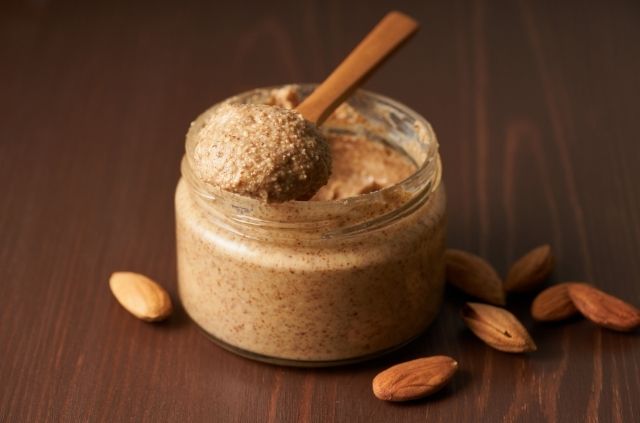Does Almond Butter Have Lectins?
Some people think of almond butter to be the healthy alternative to peanut butter. But sometimes unpeeled almonds can cause digestive problems. This brings us to the following question: does almond butter have lectins?
Most almond butter does not contain lectins, due to the specific process in which it’s made. However, homemade almond butter might use unpeeled almonds that contain lectins from the outer shell.
What are Lectins?
Simply put, lectins are a type of protein that binds to sugar and carbohydrates. They are present in all forms of life, including plants and in the human body.
Lectins have an agglutination, or gluing, sticking, effect. They are carbohydrate-binding proteins that bind to particular cells.
Many lectins are concentrated in seeds and tubers, like potatoes. All types of grain, legumes, nuts, or seed are rich in lectins.
Are Lectins Good?
It’s important to note that some lectins are beneficial, while others are extremely toxic.
Good lectins have a healthy effect on the human body. Specific lectins even act as antimicrobial agents.
Some lectins can be extremely beneficial in activating or stimulating a part of the human immune system to help fight off specific illnesses. They also act as an anti-microbial agent.

Even though some types of lectins can be beneficial, generally speaking, it’s best not to consume too many lectins.
They are usually considered to be a major family of protein anti-nutrients and can act similarly to antibodies, sticking to red blood cells.
Lectins and Digestion
The human body is not able to digest lectins. So, they travel through the intestines and the gut unchanged. In this process, lectins may interfere with the absorption of some minerals, like calcium, iron, phosphorus, and zinc.
When lectins bind to cells in the digestive tract they can disrupt the breakdown and absorption of specific nutrients that are needed for good health. This process could lead to inflammation and inflammatory conditions such as rheumatoid arthritis or diabetes.
Lectins are most potent when the food they are in is raw. Cooking, fermenting, and sprouting will reduce the potentially harmful lectin content. Boiling, stewing, or soaking in water for several hours will also render most lectins inactive.
For instance, cooking foods or nuts at a low heat in a slow cooker removes all of the lectins, even in seeds or beans that contain a high level of lectins when raw.
Does Almond Butter Have Lectins?
Lectins are only found in the brown outer layer coating of an almond.
If almond butter has not been blanched and cooked in a way that removes the brown lectin-containing coating, it will contain lectins that have been ground up.
There are only a few brands of almond butter that make it with blanched almonds. So, always read the label.
Almond butter doesn’t have to contain lectins. There is a way to make lectin-free almond butter. Remember, it is the brown skin of the almond that contains lectins.
The best way to remove these lectins is to blanch the almonds. Remove the lectins yourself by making your own lectin-free almond butter:
- Bring a pot of water to a boil
- Add almonds into the boiling water, and boil for exactly one minute so as not to waterlog the almonds
- Use a strainer to drain the almonds
- Rinse in cold water
- Use paper towels to blot the almonds until they are dry
- Gently squeeze each almond to loosen their skins
- Discard the skins
- Allow the almonds to dry completely
Now, the lectin-free blanched almonds are ready to grind up into almond butter.
Further Reading
- How to Soften Almond Butter
- Does Almond Butter Need to be Refrigerated?
- Can You Eat Almond Butter on Keto?
- Is Almond Butter Low FODMAP?
Search Terms
- Does Almond Butter Have Lectins?
